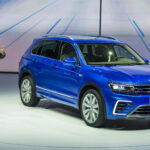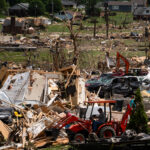The use of lithium ion batteries to power aircraft systems isn’t necessarily unsafe despite a battery fire in one Boeing 787 Dreamliner and smoke in another, but manufacturers need to build in reliable safeguards, the top U.S. aviation safety investigator said Wednesday.
National Transportation Safety Board Chairman Deborah Hersman said she doesn’t want to “categorically” rule out the use of lithium ion batteries to power aircraft systems, even though it’s clear that safeguards failed in the case of a Japan Airlines 787 that had a battery fire while parked at Boston’s Logan International Airport last month.
“Obviously what we saw in the 787 battery fire in Boston shows us there were some risks that were not mitigated, that were not addressed,” Hersman told reporters in an interview. The fire was not “what we would have expected to see in a brand new battery in a brand new airplane,” she said.
The board is still weeks away from determining the cause of the Jan. 7 battery fire, Hersman said.
The 787 is the first airliner to make extensive use of lithium batteries. Aircraft makers view lithium batteries, which are lighter and can store more energy than other types of batteries of an equivalent size, as an important way to save on fuel costs. The Airbus A350, expected to be ready next year, will also make extensive use of lithium ion batteries. Manufacturers are also looking to retrofit existing planes, replacing other types of batteries with lithium ion.
But lithium batteries are more likely to short circuit and start a fire than other batteries if they are damaged, if there is a manufacturing flaw or if they are exposed to excessive heat.
Investigators are looking into the special conditions the Federal Aviation Administration required Boeing to meet in order to use lithium ion batteries to power the 787’s electrical systems, she said.
A government-industry advisory board that works closely with the FAA issued testing standards for lithium batteries used in aircraft operations several months after the agency had approved a separate testing regime for the 787’s batteries.
“What happens is that when an aircraft is certified, it basically gets locked into the standards that were in existence at the time,” Hersman said. Often, tougher standards will come along later, but they aren’t applied to already-approved aircraft designs. “Those are issues we do look at regularly in our investigations, and it is something I’m sure we will be focusing on with the battery,” she said.
Investigators have been working very closely with the FAA on a review the agency has under way of its sanctioning of the 787’s certification for flight, Hersman said. The FAA awarded the certification in August 2011.
“We are evaluating assessments that were made, whether or not those assessments were accurate, whether they were complied with and whether more needs to be done,” she said. “I think that is important before this airplane is back in the air, to really understand what the risks are and that they’re mitigated effectively.”
Was this article valuable?
Here are more articles you may enjoy.

 Cars Are Getting Smarter. Why It Matters for Claims Professionals
Cars Are Getting Smarter. Why It Matters for Claims Professionals  Four Ex-VW Managers Convicted in Germany Over Diesel Scandal
Four Ex-VW Managers Convicted in Germany Over Diesel Scandal  Two Chevron Workers Die of Injuries From Angola Platform Fire
Two Chevron Workers Die of Injuries From Angola Platform Fire  Trump Administration Targets Resiliency Funds to Shrink FEMA’s Role
Trump Administration Targets Resiliency Funds to Shrink FEMA’s Role 